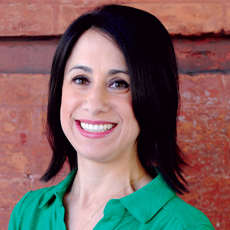
Elderly patients face many challenges during their cancer care, and one of the biggest is maintaining good nutritional status. Proper nutrition is vital for healthy aging; however, when the complications of cancer treatment combine with the diagnosis of a metabolic disease — a common health issue for the aging population—the risk for malnutrition drastically increases.
In fact, malnutrition risk is estimated to be between 47% to 62% for older adults in long-term care facilities.1
Malnutrition is associated with “increased risk of infections, treatment toxicity, and increased healthcare costs, and decreased response to treatment, quality of life and life expectancy,”2 which clearly supports the necessity of malnutrition screening and monitoring by a registered dietitian. RDs can then provide evidence-based recommendations to prevent or treat a variety of nutrition issues including malnutrition, sarcopenia and other nutrition imbalances.
Understanding the importance of this issue is the first step in caring for this specialized population, and luckily, there are also many tangible steps LTC facilities can take in order to improve the nutritional status of its residents and lower the risk of malnutrition.
Involving the nutrition team
Individualized nutrition plans enhance the quality of life and nutrition status of older adults in LTC.1 Registered dietitians should implement a validated nutrition screening tool upon admission to LTC, which can foster early identification of nutrition risk or existing malnutrition, and continue to screen routinely throughout the patient’s stay.
Many RDs utilize nutrition-focused physical exams to assess adipose and muscle wasting, estimate calorie and protein requirements, and relay creative strategies for maximizing nutritional status. The complexity of elderly oncology patients requires the coordination and expertise of multiple health professionals, so RDs should work in tandem with an interdisciplinary care team with the support of all members to implement the appropriate, evidence-based, individualized nutrition plan.
Suggestions for LTC staff to optimize nutrition
Dietitians and food service staff should take into consideration personal preferences and individualized dietary preferences to maximize nutritional intake during resident stays. Unless a medical necessity indicates restriction, RDs should be as liberal as possible with diet prescriptions.
Here are some useful suggestions to promote optimal protein and nutrient intake:
• Provide assistance if the patient has dentition or chewing issues. Offer modified texture diets, cut up hard to chew food in small pieces, and moisten food with sauces.
• Assess and integrate cultural or dietary preferences within the prescribed diet. For example, patients of Islamic or Jewish descent may avoid pork, so good protein alternatives to offer would be regular and turkey bacon. If someone does not like milk with their breakfast, offer a protein or carbohydrate swap such as yogurt, cottage cheese, sliced cheese or a piece of fruit.
• Be flexible and periodically reassess food preferences, as they may change during an extended stay.
• Schedule meal and snack intakes within the patient’s daily schedule. If a patient has an early morning scan appointment and misses breakfast service, offer a cold breakfast later in the day.
• Keep nutrient-dense snacks available at their bedside.
• Encourage frequent physical activity, such as taking walks up and down the hallway to utilize muscles (as medically tolerated).
• Encourage intake of oral nutrition supplements and nutritional shakes (high-calorie, high protein ready-made drinks or powders) as determined appropriate by the RD.
• If patients report poor appetite, encourage intake of the protein-rich portion of the meal first.
• If cognitive impairment is a factor, offer feeding assistance to ensure optimal nutrition.
• Provide appropriate education, motivating patients by explanation of the benefits of good nutrition, and avoiding malnutrition, during LTC stays.
• Split full meals into smaller portions on serving plates, and finish a full meal in two portions.
• Offer finger foods if utilizing utensils is a challenge.
• If patients report early satiety, limit fluid intake at meal time.
How to manage setbacks
Older adults may experience setbacks such as treatment breaks, hospitalizations or diagnosis of comorbid conditions, so the interdisciplinary team should work together with strong communication to manage all aspects of patient care.
If a patient is admitted into the hospital, the LTC dietitian should communicate with a counterpart there. Goals of care and nutrition plans should be communicated and reinforced in the hospital setting. Routine nutrition assessment can ensure the patient’s status and that their goals of care are continuously assessed. RDs should attend medical rounds and team meetings to reinforce nutrition care plans (NCP) and urge other members of the medical team to support the NCP.
Nutrition care is essential for elderly oncology patients within LTC facilities. Ongoing assessment and monitoring by an RD can improve patient outcomes and indirectly benefit healthcare facilities.
As nutrition impairments impact healthcare, malnourished individuals incur higher healthcare costs, readmissions rates, longer length of stay and poorer quality of life. Implementing individualized nutrition care plans result in increased energy, protein and nutrient intakes, improved nutritional status, improved quality of life and weight gain.3
Long-term care facility staff should continuously work with registered dietitian staff to ensure timely screening, assessment, implementation and monitoring of the nutrition care plan.
Jessica A. Iannotta is a registered dietitian and certified specialist in oncology nutrition and the COO of Savor Health— a scalable, evidence-based personalized nutrition and exercise  technology platform which improves outcomes, increases therapyadherence, reduces treatment costs, and empowers patients to takecontrol of their disease. Susan Bratton,a former Wall Street banker who represented early and growth stagehealthcare services and insurance companies, is the CEO and Founder ofSavor Health.
technology platform which improves outcomes, increases therapyadherence, reduces treatment costs, and empowers patients to takecontrol of their disease. Susan Bratton,a former Wall Street banker who represented early and growth stagehealthcare services and insurance companies, is the CEO and Founder ofSavor Health.
References
1.Dorner, B., & Friedrich, E. K. (2018). Position of the Academy ofNutrition and Dietetics: Individualized Nutrition Approaches for OlderAdults: Long-Term Care, Post-Acute Care, and Other Settings. Journal ofthe Academy of Nutrition and Dietetics, 118(4), 724-735.doi:10.1016/j.jand.2018.01.022
2.Isenring, E. A., Bauer, J. D., & Capra, S. (2007). NutritionSupport Using the American Dietetic Association Medical NutritionTherapy Protocol for Radiation Oncology Patients Improves Dietary IntakeCompared with Standard Practice. Journal of the American DieteticAssociation, 107(3), 404-412. doi:10.1016/j.jada.2006.12.007
3.Unintended Weight Loss in Older Adults. (n.d.). Retrieved fromttps://www.andeal.org/topic.cfm?cat=3651 Accessed April 24, 2018.



